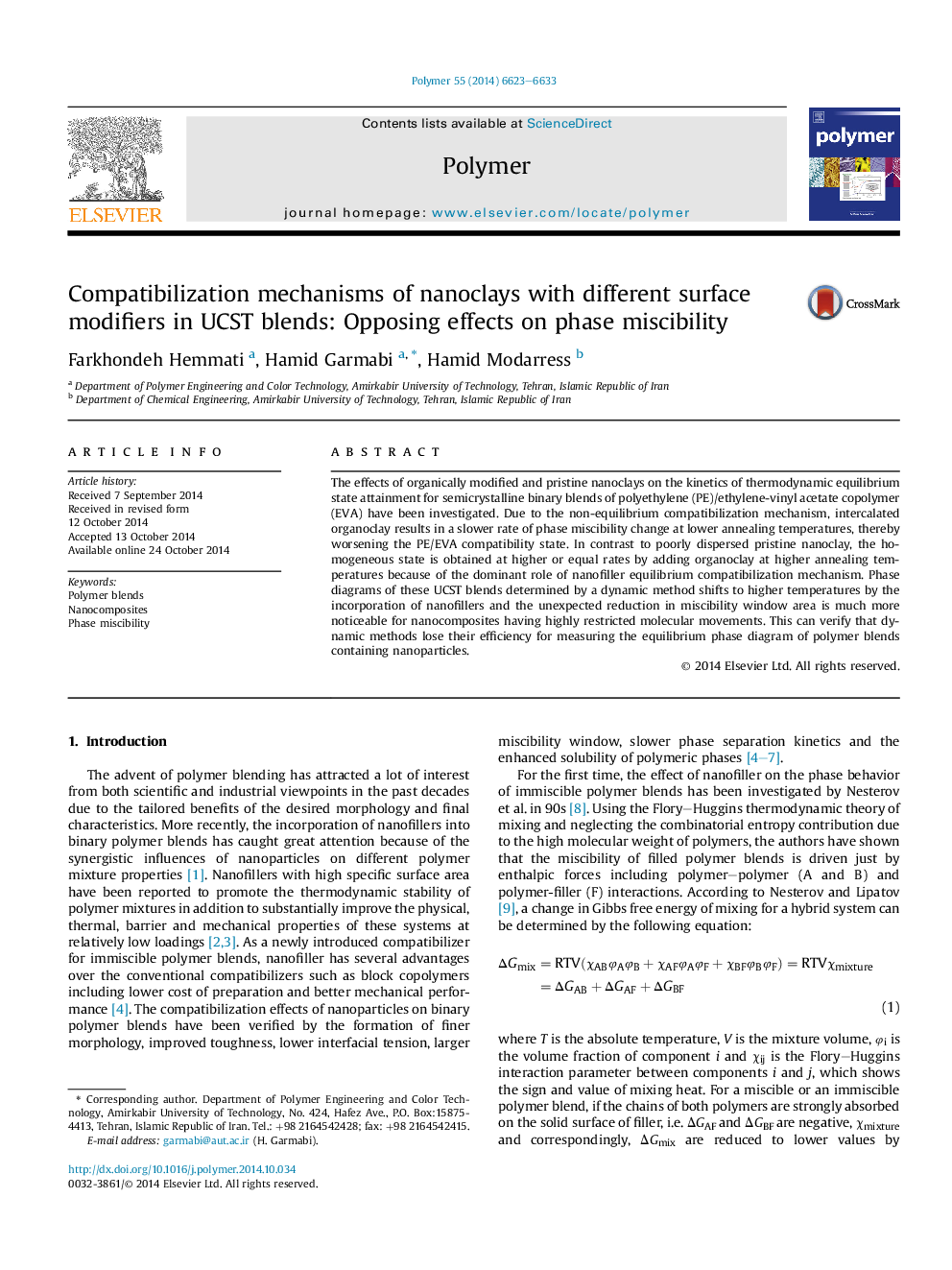| Article ID | Journal | Published Year | Pages | File Type |
|---|---|---|---|---|
| 5181016 | Polymer | 2014 | 11 Pages |
â¢Nanofiller compatibilization mechanisms in polyolefin blends are investigated.â¢Nanoclay pinning effect worsens the blend miscibility state at lower temperatures.â¢Organoclay equilibrium mechanism causes a higher rate for obtaining mixed state.â¢Area of rheologically determined miscibility window decreases for nanocomposites.â¢Dynamic methods cannot determine the nanocomposite equilibrium phase diagram.
The effects of organically modified and pristine nanoclays on the kinetics of thermodynamic equilibrium state attainment for semicrystalline binary blends of polyethylene (PE)/ethylene-vinyl acetate copolymer (EVA) have been investigated. Due to the non-equilibrium compatibilization mechanism, intercalated organoclay results in a slower rate of phase miscibility change at lower annealing temperatures, thereby worsening the PE/EVA compatibility state. In contrast to poorly dispersed pristine nanoclay, the homogeneous state is obtained at higher or equal rates by adding organoclay at higher annealing temperatures because of the dominant role of nanofiller equilibrium compatibilization mechanism. Phase diagrams of these UCST blends determined by a dynamic method shifts to higher temperatures by the incorporation of nanofillers and the unexpected reduction in miscibility window area is much more noticeable for nanocomposites having highly restricted molecular movements. This can verify that dynamic methods lose their efficiency for measuring the equilibrium phase diagram of polymer blends containing nanoparticles.
Graphical abstractDownload high-res image (481KB)Download full-size image
